Walking is often overshadowed by running and other high-intensity exercise — it’s slower and less intense, after all. But this form of cardio is definitely worth implementing into your fitness regimen. It comes with a host of physical and mental health benefits, and it’s easier on the body than high-impact cardio.
Aiming to liven up your walking workout routine or add new ideas to your repertoire? I’ll share five of the best treadmill walking workouts out there, while certified strength and conditioning specialist Aleksander Saks provides insight into the health benefits of walking.
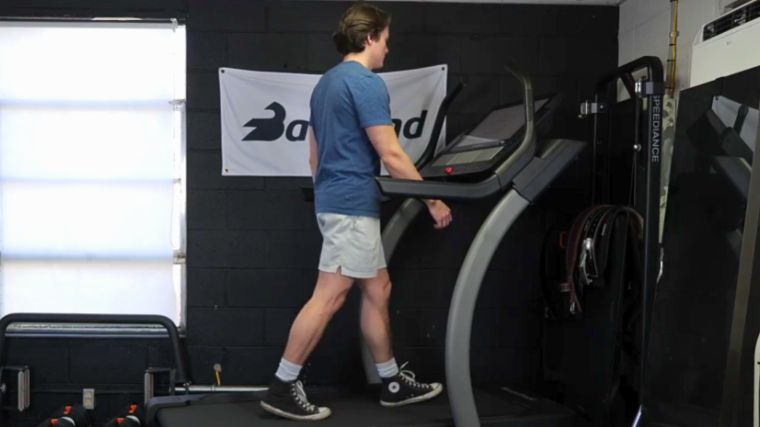
Editor’s Note: The content on BarBend is meant to be informative in nature, but it should not be taken as medical advice. When starting a new training regimen and/or diet, it is always a good idea to consult with a trusted medical professional. We are not a medical resource. The opinions and articles on this site are not intended for use as diagnosis, prevention, and/or treatment of health problems. They are not substitutes for consulting a qualified medical professional.
Try These 5 Walking Workouts
Yes, walking is a good workout — and yes, it definitely “counts” as cardio. These five treadmill walking workouts range from simple and easy to complex and challenging. Choose one based on what your weekly workout routine calls for, or how you’re feeling today.
- Simple Walking Workout
- Interval Walking Workout
- 12-3-30 Workout
- Interval Incline Walking Workout
- Endurance Walking Workout
1. Simple Walking Workout
Often, simple is best. You can enjoy the many benefits of taking a stroll with this simple walking workout, which many would just call, well, going for a walk. Low-intensity steady-state (LISS) cardio, including walking, is generally easier on the body than interval workouts or high-intensity training, and it’s often exactly what’s needed to feel refreshed, energized, and productive.
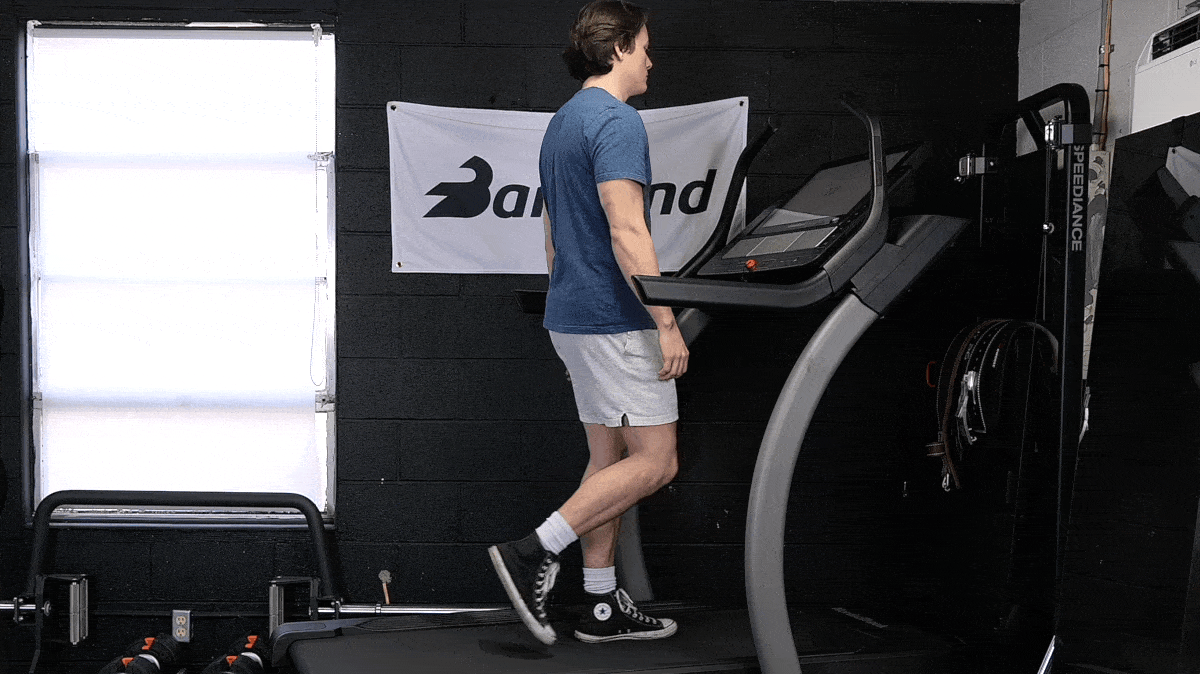
[Read More: The Best Treadmills for Walking, Researched and Tested by Our Team]
The Workout
- Set a timer for 30, 45, or 60 minutes.
- Walk at a steady pace for the entire duration.
How Often to Do This Workout: You can do this type of walk every day if you’d like, but two or three times per week is great.
Modifications
- Make it Easier: Since this is a steady-state workout, the difficulty level is all about pace. If you feel unusually fatigued, slow down your pace.
- Make it Harder: Increase your pace or bump up the incline level a bit for a challenge.
Bonus: You can even do this workout on an under-desk treadmill from your home office if you are crunched for time.
2. Interval Walking Workout
Do you want something to increase your heart rate and help your legs feel all that hard work? Try this interval walking workout, which alternates between hard, medium, and easy efforts.
The Workout
- Warm-Up: Walk 5 minutes at a moderate pace at incline setting 1 on your treadmill
- Increase the incline to setting 3 and leave it there for the rest of the workout
- 1 minute at a medium effort (65 to 70 percent of max heart rate)
- 1 minute at a hard effort (70 to 80 percent of max heart rate)
- 30 seconds at a very hard effort (above 80 percent of max heart rate)
- 2.5 minutes at an easy effort
- Repeat three to five times for a total of 15 to 25 working minutes (not including warm-up and cool-down)
- Cool-Down: 5 easy minutes of walking at incline setting 1
How Often to Do This Workout: Because this workout is more intense, start out by doing it one or two times per week. You can work up to more if you’d like.
[Read More: Expert Tested: The Best Cushioned Treadmills]
Modifications
- Make it Easier: The beauty of this workout is that it’s based entirely on perceived effort. Today’s very hard effort may be different from tomorrow’s very hard effort. Adjust the speed as needed to make it easier.
- Make it Harder: Increase the incline setting to create a greater challenge; you may need to reduce speed to stay in the given heart rate zones.
3. 12-3-30 Workout
The 12-3-30 workout went viral on TikTok and other social media platforms in 2022 when influencer Lauren Giraldo posted it and explained that she used this workout (instead of running) to lose weight. It remains an extremely popular walking treadmill workout, so we thought we’d break it down for you here.
The Workout
- Set your treadmill’s incline setting to 12 (or 10, if that’s as high as it goes).
- Set the speed to 3 miles per hour.
- Walk for 30 minutes.
How Often to Do This Workout: Many people do this workout every day, but that’s not necessary. It’s tougher than it looks on paper, so start with once per week if you’re a beginner, and work up to more frequent sessions.
[Read More: The Best Treadmills for Heavy People]
Modifications
- Make it Easier: Decrease the incline level to something you can maintain for 30 minutes at a steady speed.
- Make it Harder: Since a 12 percent incline is the top level on many treadmills, the best way to make this workout harder is to increase your walking speed.
4. Interval Incline Walking Workout
If walking at an incline on the treadmill for a full 30 minutes sounds intimidating, know that you can start with incline intervals and work your way up to extended periods. This incline treadmill workout combines incline and speed changes to make for a challenging, sweaty walking routine.
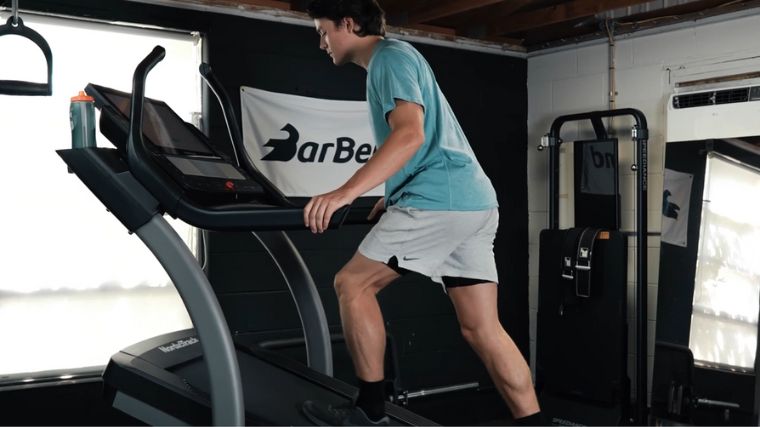
[Read More: 30-Minute Treadmill Workouts to Build Stamina and Strength]
The Workout
- Warm-Up: Walk 5 minutes at a moderate pace at incline setting 1
Repeat three to six times for a total of 15 to 30 working minutes:
- 0:00–1:00: Incline 10, speed 2.5
- 1:00–3:00: Incline 6, speed 3
- 3:00–5:00: Incline 4, speed 3.5
- Cool-Down: Walk 5 minutes at a slow pace at incline setting 1
How Often to Do This Workout: This challenging interval workout is best reserved for one to three sessions per week, since it requires a high effort.
Modifications
- Make it Easier: Decrease the incline level across all intervals.
- Make it Harder: Increase your walking speed across all intervals.
5. Endurance Walking Workout
This treadmill workout is all about increasing the amount of time you can engage in moderately hard efforts. If you are training for a hike or want to prepare for a vacation that’s going to involve a lot of walking, this is the workout for you.
The Workout
- Warm-Up: Walk 5 minutes at a moderate pace at incline setting 1
- Increase the incline to setting 3 and leave it there for the rest of the workout
Repeat 3 times:
- 8 minutes walking at 65 to 70 percent of your max heart rate
- 2 minutes walking at 50 to 60 percent of your max heart rate (very light effort)
- Cool-Down: Walking 5 minutes at a slow pace at incline setting 1
How Often to Do This Workout: To improve endurance, try to do this workout two or three times per week.
Modifications
- Make it Easier: Lower the incline setting to 1, or slightly lower the intended heart rate zone for the 8-minute interval (60 to 65 percent).
- Make it Harder: Increase the incline setting. This will require you to reduce your speed to stay in the intended heart rate zones.
The Benefits of Walking as a Workout
Walking is an excellent form of cardio exercise, and the health benefits are profound. Here’s what you can expect if you add walking cardio workouts to your fitness routine.
Simple and Straightforward
“Walking stands out for its simplicity and low impact, making it suitable for people of all ages and fitness levels,” says Aleksander Saks, certified strength and conditioning specialist. “The low-effort requirement of walking makes it a sustainable option, which is crucial for long-term progress and adherence to an exercise routine.”
[Read More: The Best Tried and Tested Treadmills for Beginners]
Additionally, while all of the above workouts are intended to be performed on treadmills, you can certainly perform variations of them outdoors, which doesn’t require anything but clothes, shoes, and water. Walking is one of the best ways for beginners to start improving their fitness, thanks to its relative ease of access.
Improves Cardiovascular Health
“Brisk walking increases heart rate and blood circulation, which helps to strengthen the heart muscle and reduce the risk of cardiovascular diseases,” Saks says. “Walking also aids in lowering blood pressure, improving cholesterol levels, and managing weight, all critical factors for heart health.”
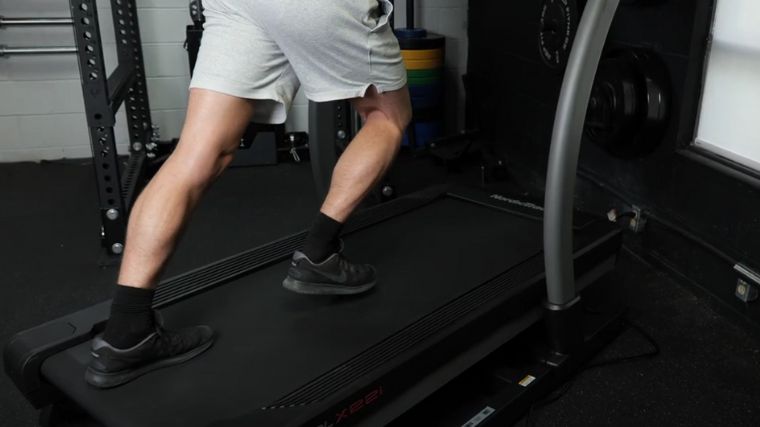
[Read More: Is Walking Good Cardio? Certified Personal Trainers Explain]
Studies show an inverse relationship between walking and cardiovascular disease risk: More walking is associated with a lower risk of various forms of heart disease. In fact, increasing your step count by just 1,000 steps per day can reduce your risk of cardiovascular events. (1)(2)
Improves Bone Health
As people age, bone density generally decreases, especially in cisgender women. You can combat the loss of bone mineral density by regularly engaging in weight-bearing exercise. According to a 2018 literature review in Biomedical Research International, walking alone can limit bone density loss in people with osteoporosis; walking in combination with load-bearing exercise, such as weight training, can reactively increase bone mass after loss. (3)
Additionally, walking engages the entire musculature of the lower body, including the quads, hamstrings, calves, and glutes, which comes with another set of benefits. “Walking is beneficial for overall physical health because it supports joint health by improving blood circulation and the strength of the muscles surrounding the joints,” Saks says, “and it helps maintain muscle tone and strength.”
Improves Mental Health
In addition to all of the physical health benefits of walking, Saks recommends walking as a way to improve one’s mental health. “Walking can reduce stress, alleviate symptoms of anxiety and depression, and improve cognitive functions due in part to the increased blood flow to the brain,” he says.
It’s well-documented that physical activity has a positive impact on mental health, with studies as recent as spring 2023 suggesting that, in some cases, exercise is even more effective than medication for reducing symptoms of depression. Researchers have called movement a “first-choice treatment” in individuals with certain depressive disorders. (4)(5)
[Read More: Benefits of Cardio — Better Sleep, Mental Health, Bone Health & More]
With regard to walking specifically, higher-intensity walking — moderate versus light — seems to have a greater impact, at least in older adults. (6)
Worth noting is that “nature contact” makes a big impact, too, according to a 2022 study in Frontiers in Behavioral Neuroscience. Walking through green spaces seems to amplify the positive effect on mental health, so consider taking some of your walks outdoors. (7)
How Many Steps Should I Aim for Daily?
Despite the now-standard advice that everyone should walk 10,000 steps per day, the answer to this question is more nuanced than that.
The 10,000-step-per-day benchmark is a solid goal for individuals who engage in walking as their primary form of exercise. However, for those who also spend time doing other forms of physical activity, including strength training, HIIT workouts, swimming, or cycling, that 10,000-step aim is more arbitrary.
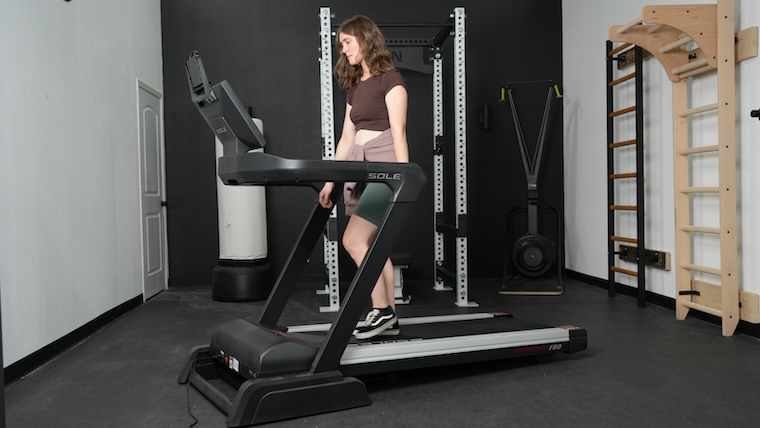
[Read More: The Best Treadmills with Screens, As Chosen by Our Experts]
If you’re active in ways other than walking, a better rule of thumb is to engage in at least 150 minutes (or two and a half hours) of moderate-intensity cardio exercise per week, per the Physical Activity Guidelines for Americans put forth by the U.S. Office of Disease Prevention and Health Promotion.
If you’re struggling to go for a walk each day, Saks has sage advice: Things stick when they’re habits.
“Everyone’s lives are busy and building new habits is not easy,” he says. “Incorporating a walk into your daily routine will decrease the energy needed to go on that walk, which will ultimately help in developing consistency.”
This may sound easier said than done (and it most definitely is), but fitness coaches and consistent exercisers tend to agree that habit, not motivation, gets them through their workouts much of the time.
FAQs
Still have questions about the best treadmill walking workouts? We have answers.
The ideal duration of a treadmill workout depends largely on the walking pace, exercise intensity, and type of workout. For instance, a high-intensity interval training (HIIT) walking workout or one with a steep incline will be shorter than a steady-state, moderate-intensity walking workout, because the effort output is much higher.
A good rule of thumb for beginners is to engage in 150 minutes (two and a half hours) of moderate-intensity cardio exercise per week. That breaks down to 21 minutes of walking each day.
What makes a workout “good” is rather subjective, but Saks provides some great general tips:
“Intensity: Aim for a pace that makes you breathe faster, but still allows you to hold a conversation. This is typically around three to four miles per hour for most people.
Duration: Gradually build up to at least 30 minutes of brisk walking on most days of the week. If 30 minutes is too much at once, break it down into shorter sessions, such as three 10-minute walks, spread throughout the day.
Frequency: Consistency is crucial for reaping the benefits of walking. Aim for at least five days a week to get the recommended 150 minutes of moderate-intensity aerobic activity.”
A walking workout program can help you burn calories and achieve a caloric deficit, which is essential for losing weight. To further increase your caloric deficit via walking, try increasing the intensity of your workout by adding hard-effort intervals, experimenting with incline ranges, and working to improve your overall walking speed.
References
- Hall KS, Hyde ET, Bassett DR, et al. Systematic review of the prospective association of daily step counts with risk of mortality, cardiovascular disease, and dysglycemia. Int J Behav Nutr Phys Act. 2020;17(1):78.
- Sheng M, Yang J, Bao M, et al. The relationships between step count and all-cause mortality and cardiovascular events: A dose-response meta-analysis. J Sport Health Sci. 2021;10(6):620-628.
- Benedetti MG, Furlini G, Zati A, Letizia Mauro G. The Effectiveness of Physical Exercise on Bone Density in Osteoporotic Patients. Biomed Res Int. 2018;2018:4840531.
- Singh B, Olds T, Curtis R, et al. Effectiveness of physical activity interventions for improving depression, anxiety and distress: an overview of systematic reviewsBritish Journal of Sports Medicine 2023;57:1203-1209.
- Heissel A, Heinen D, Brokmeier LL, et al. Exercise as medicine for depressive symptoms? A systematic review and meta-analysis with meta-regressionBritish Journal of Sports Medicine 2023;57:1049-1057.
- Han A, Kim J, Kim J. A Study of Leisure Walking Intensity Levels on Mental Health and Health Perception of Older Adults. Gerontol Geriatr Med. 2021;7:2333721421999316.
- Legrand FD, Jeandet P, Beaumont F, Polidori G. Effects of Outdoor Walking on Positive and Negative Affect: Nature Contact Makes a Big Difference. Front Behav Neurosci. 2022;16:901491
The post The Best 5 Treadmill Walking Workouts From a CPT (+ Insight From a Conditioning Coach) appeared first on BarBend.

